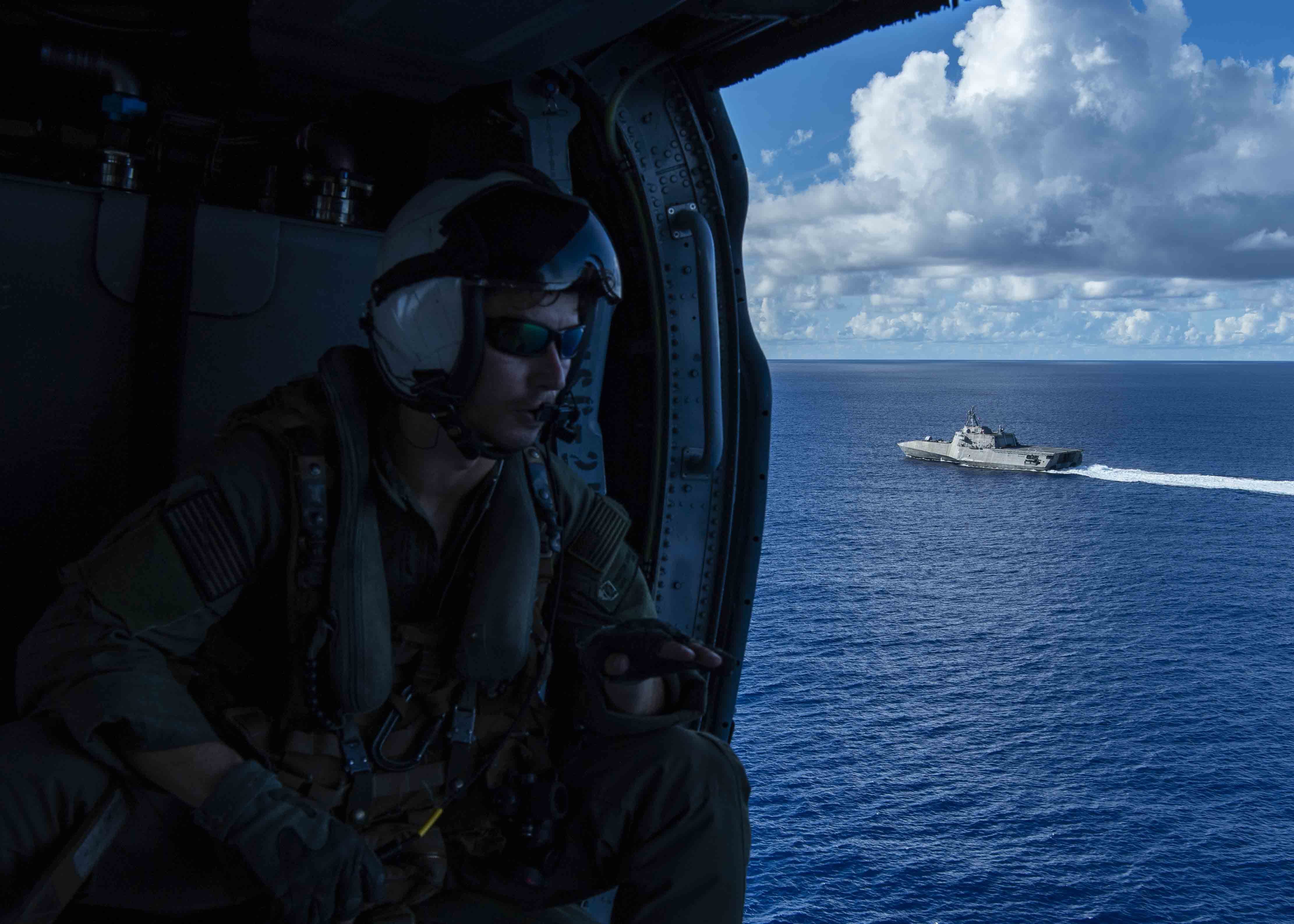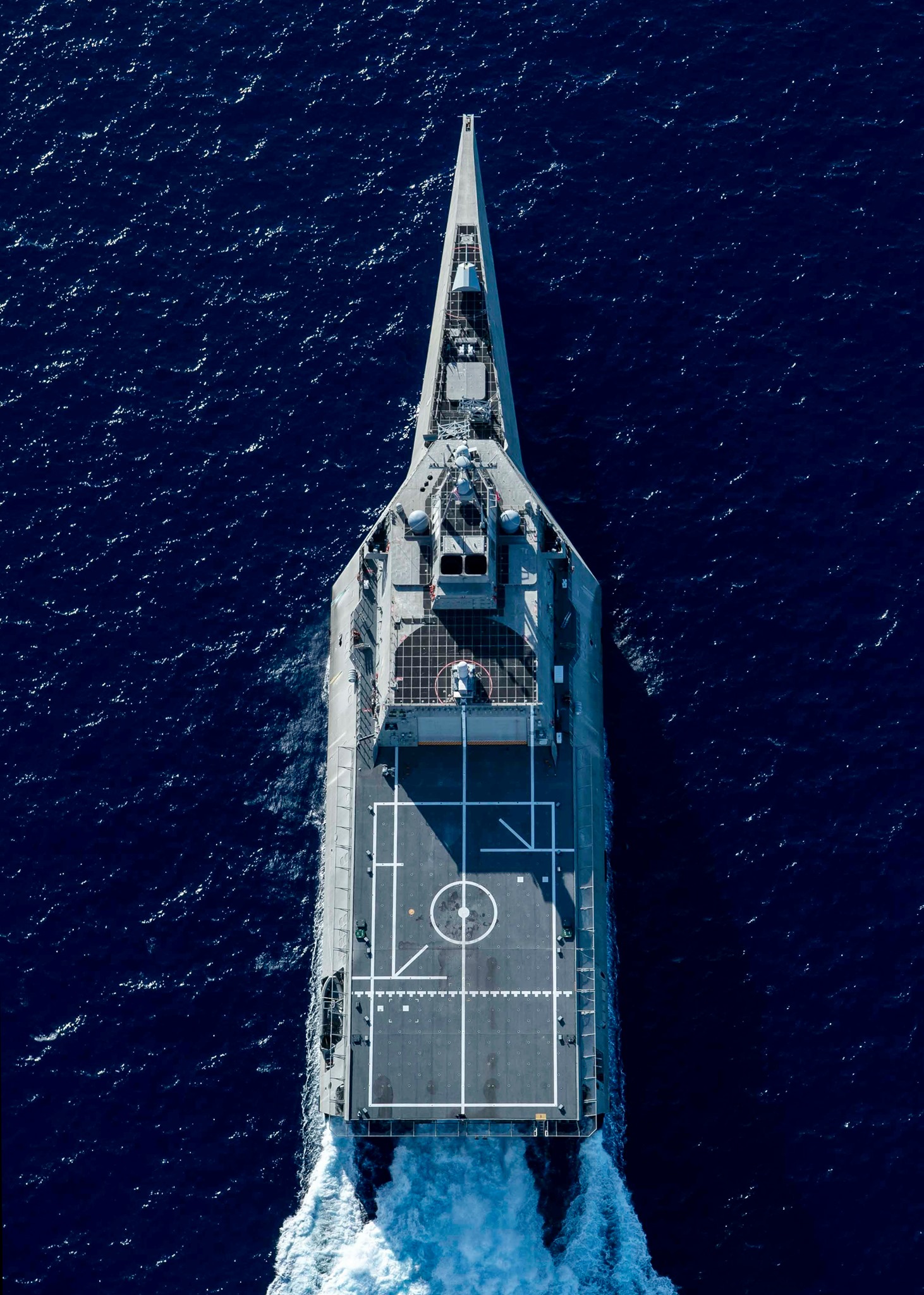
KUALA LUMPUR – Two Independence-class Littoral Combat Ships – USS Tulsa (LCS-16) and USS Charleston (LCS-18) – are currently on their first deployments to the Indo-Pacific region, with Charleston recently conducting a refueling stop in Singapore at Changi Naval Base and Tulsa operating in the Philippine Sea.
Capt. Tom Ogden, the commodore of Destroyer Squadron 7 (DESRON 7), confirmed the activities of the two LCSs, both of which are assigned to his command.
“After arriving to the U.S. 7th Fleet area of responsibility in April and May respectively, USS Tulsa (LCS 16) and USS Charleston (LCS 18) are on their maiden deployments to the Indo-Pacific region. LCS rotational deployments to C7F provide operational commanders great adaptability to support Allies and Partners across the region; offer persistent presence; and contribute to our shared commitment to maritime security; there’s no better demonstration of our commitment to a free and open Indo-Pacific than U.S. Naval operations in the region,” Ogden said in response to a query from USNI News.
Ogden stated that the Charleston conducted a contactless brief stop for fuel at Changi Naval Base, Singapore, noting that the ability to provide logistic support from Singapore is one of the cores of the U.S.-Singapore security relationships and the support allows the rotationally deployed LCSs to conduct operations in the U.S 7th Fleet area of operations.
He also confirmed that Tulsa had stopped in Okinawa recently.
“As one of the many stops in port that will happen during their deployment, USS Tulsa is visiting Naval Base White Beach, Okinawa. Naval personnel including staff from Expeditionary Strike Group 7 and U.S. Marines from III Marine Expeditionary Force (MEF) and subordinate commands are spending time aboard Tulsa for familiarization of the platform, and to explore integration methods for future operability with the Marine Corps,” he said.

The U.S Pacific fleet Facebook page posted photos on June 15 showing Tulsa in the Philippine Sea. Prior to operating under U.S 7th Fleet, both ships had been under U.S 3rd Fleet, conducting joint missions of the Oceania Maritime Security Initiative (OMSI). The OMSI program is a Secretary of Defense initiative that leverages Department of Defense assets transiting the region to improve maritime security and domain awareness in Oceania, along with reducing and eliminating illegal, unregulated, unreported (IUU) fishing, combat transnational crimes, and enhancing regional security, according to to the Navy. Both LCSs, in conducting the tasking, carried an embarked U.S Coast Guard law enforcement detachment on them.
Subsequently, the two LCSs moved on to Guam, where Charleston on May 28 hosted German Defense Minister Annegret Kramp-Karrenbauer, who was visiting Guam. Tulsa’s and Charleston’s rotational deployment marks the sixth and seventh Littoral Combat Ship that have oeprated in the Indo-Pacific, which include USS Freedom (LCS-1), USS Fort Worth (LCS-3), USS Coronado (LCS-4), USS Montgomery (LCS-8), USS Gabrielle Giffords (LCS-10).
Meanwhile, the Navy announced this week that the Reagan Carrier Strike Group, which is on its spring patrol, has moved into the South China Sea.
“The South China Sea is pivotal to the free flow of commerce that fuels the economies of those nations committed to international law and rules-based order,” said Rear Adm. Will Pennington, commander, Ronald Reagan Carrier Strike Group said in a statement.
In the next several weeks, Reagan will move to 5th Fleet to cover the U.S. withdrawal from Afghanistan. The Eisenhower Strike Group is set to leave the Middle East and return to Norfolk, Va.
On June 10, the Japan-based America Expeditionary Strike Group and the 31st Marine Expeditionary Unit formally started their patrol in the Western Pacific, the Navy announced.
“Together, the forward-deployed ships of PHIBRON 11 and elements of the 31st MEU are operating in the U.S. 7th Fleet area of responsibility to enhance interoperability with allies and partners, and serve as a ready response force to defend peace and stability in the Indo-Pacific region,” reads a Navy statement.





